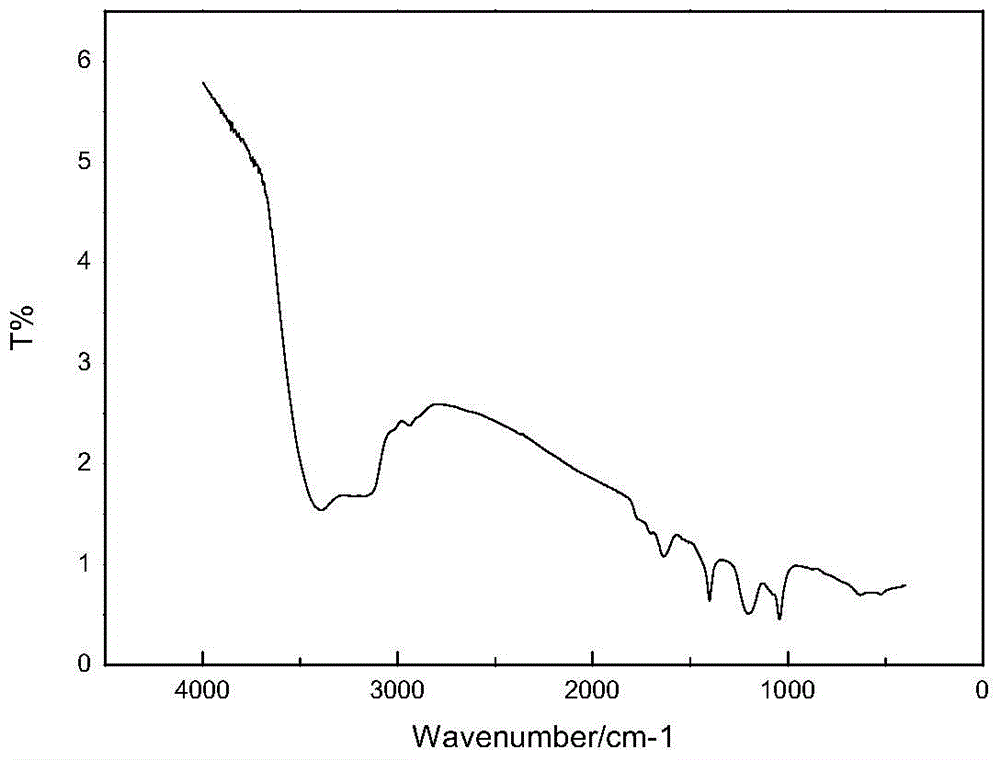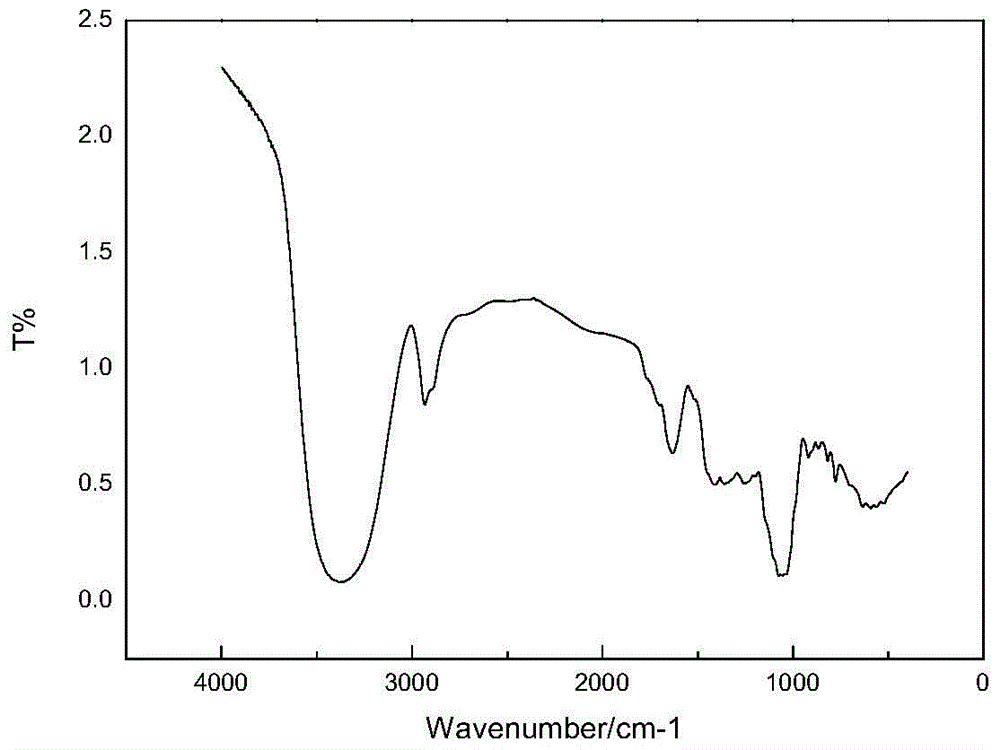A method for preparing sucrose-based caramel pigment by non-ammonia method
A technology based on caramel and sucrose, which is applied in the field of green food processing to achieve the effects of large-scale production, broadened approaches and product stability.
- Summary
- Abstract
- Description
- Claims
- Application Information
AI Technical Summary
Problems solved by technology
Method used
Image
Examples
Embodiment 1
[0055] 1) Mix and dissolve high-purity sucrose raw material (refined white granulated sugar, in which the sucrose purity is 99.88%) and water at a mass ratio of 1:0.75;
[0056]2) Mix the completely dissolved sugar solution and palm oil in a mass ratio of 0.618:1;
[0057] 3) Put the mixed sample of sugar and oil in a reactor with a high-speed disperser, start the high-speed disperser, heat, stir, and perform a pyrolysis caramelization reaction; when the reaction temperature reaches 150°C, add 50g of Boiling water, continue to stir the reaction; when the reaction temperature reaches 150°C again, add the same amount of boiling water, repeat the addition of boiling water 15 times, then stir and keep warm for 20 minutes, and the reaction is over; the entire first pyrolysis caramelization reaction The heating temperature in the process is 110°C~180°C;
[0058] 4) Move the mixed product after the reaction to the oil-water separator, let it stand still, and separate the bottom prod...
Embodiment 2
[0063] 1) Mix and dissolve the high-purity sucrose raw material (R4 syrup in the sugar refinery, in which the sucrose purity is 93.73%) and water at a mass ratio of 1:0.53;
[0064] 2) Mixing completely dissolved sugar liquid with food grade paraffin oil in a mass ratio of 0.618:0.382;
[0065] 3) Put the mixed sample of sugar and oil in a reactor with a high-speed disperser, start the high-speed disperser, heat, stir, and perform a pyrolysis caramelization reaction; when the reaction temperature reaches 145°C, add 50g of Boiling water, continue to stir the reaction; when the reaction temperature reaches 145°C again, add the same amount of boiling water, repeat the addition of boiling water 10 times, then stir and keep warm for 20 minutes, and the reaction is over; the entire first pyrolysis caramelization reaction The heating temperature in the process is 110°C~180°C;
[0066] 4) Move the mixed product after the reaction to the oil-water separator, let it stand still, and se...
Embodiment 3
[0072] 1) Mix and dissolve high-purity sucrose raw material (secondary white granulated sugar, in which the sucrose purity is 99.53%) and water at a mass ratio of 1:0.61;
[0073] 2) fully dissolving the sugar solution and coconut oil in a mass ratio of 0.382:0.618;
[0074] 3) Put the sugar and oil mixed sample in a reactor with a high-speed disperser, start the high-speed disperser, heat, stir, and perform a pyrolysis caramelization reaction; when the reaction temperature reaches 140°C, add 50g of hot water water, continue to stir the reaction; when the reaction temperature reaches 140°C again, add the same amount of boiling water, repeat the addition of boiling water 15 times, then stir and keep warm for 25 minutes, and the reaction is over; the entire first pyrolysis caramelization reaction The heating temperature in the process is 110°C~180°C;
[0075] 4) Move the mixed product after the reaction to the oil-water separator, let it stand still, and separate the bottom pro...
PUM
 Login to View More
Login to View More Abstract
Description
Claims
Application Information
 Login to View More
Login to View More - R&D
- Intellectual Property
- Life Sciences
- Materials
- Tech Scout
- Unparalleled Data Quality
- Higher Quality Content
- 60% Fewer Hallucinations
Browse by: Latest US Patents, China's latest patents, Technical Efficacy Thesaurus, Application Domain, Technology Topic, Popular Technical Reports.
© 2025 PatSnap. All rights reserved.Legal|Privacy policy|Modern Slavery Act Transparency Statement|Sitemap|About US| Contact US: help@patsnap.com



